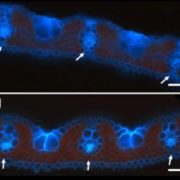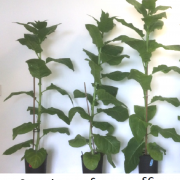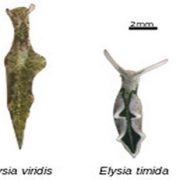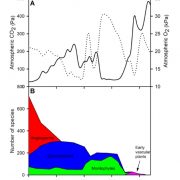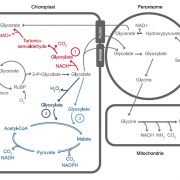Chloroplast ATP synthase structure generated through cryo-EM ($) (Science)
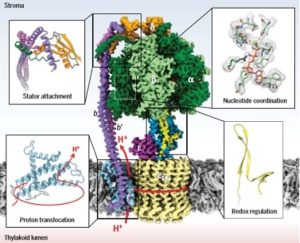 Green plants use photosynthesis to covert light into ATP (adenosine triphosphate) through the molecular action of the chloroplast F1Fo ATP synthase (cF1Fo). The ATP synthesis happens in the hydrophilic head (c F1) and is powered by the cFo rotary motor located in the photosynthetic membrane. This rotary motor is driven by the electrochemical gradient maintained across the membrane. Crystallization of this large and dynamic membrane-bound protein has been difficult so no high-resolution structure of an entire, functional ATP synthase has been generated. Thus, Hahn and colleagues used a lipid nanodisc-based purification method to generate a high-resolution spinach c F1Fo structure (2.9 Å for cF1, 3.4 Å for cFo) through cryo-electron microscopy (cryo-EM). They also characterize three functional states that are involved in rotary ATP synthesis. The features of cF1Fo are similar to ATP synthases in mitochondria and bacteria, even though the evolutionary distance is about a billion years or more. (Summary by Julia Miller) Science 10.1126/science.aat4318
Green plants use photosynthesis to covert light into ATP (adenosine triphosphate) through the molecular action of the chloroplast F1Fo ATP synthase (cF1Fo). The ATP synthesis happens in the hydrophilic head (c F1) and is powered by the cFo rotary motor located in the photosynthetic membrane. This rotary motor is driven by the electrochemical gradient maintained across the membrane. Crystallization of this large and dynamic membrane-bound protein has been difficult so no high-resolution structure of an entire, functional ATP synthase has been generated. Thus, Hahn and colleagues used a lipid nanodisc-based purification method to generate a high-resolution spinach c F1Fo structure (2.9 Å for cF1, 3.4 Å for cFo) through cryo-electron microscopy (cryo-EM). They also characterize three functional states that are involved in rotary ATP synthesis. The features of cF1Fo are similar to ATP synthases in mitochondria and bacteria, even though the evolutionary distance is about a billion years or more. (Summary by Julia Miller) Science 10.1126/science.aat4318



